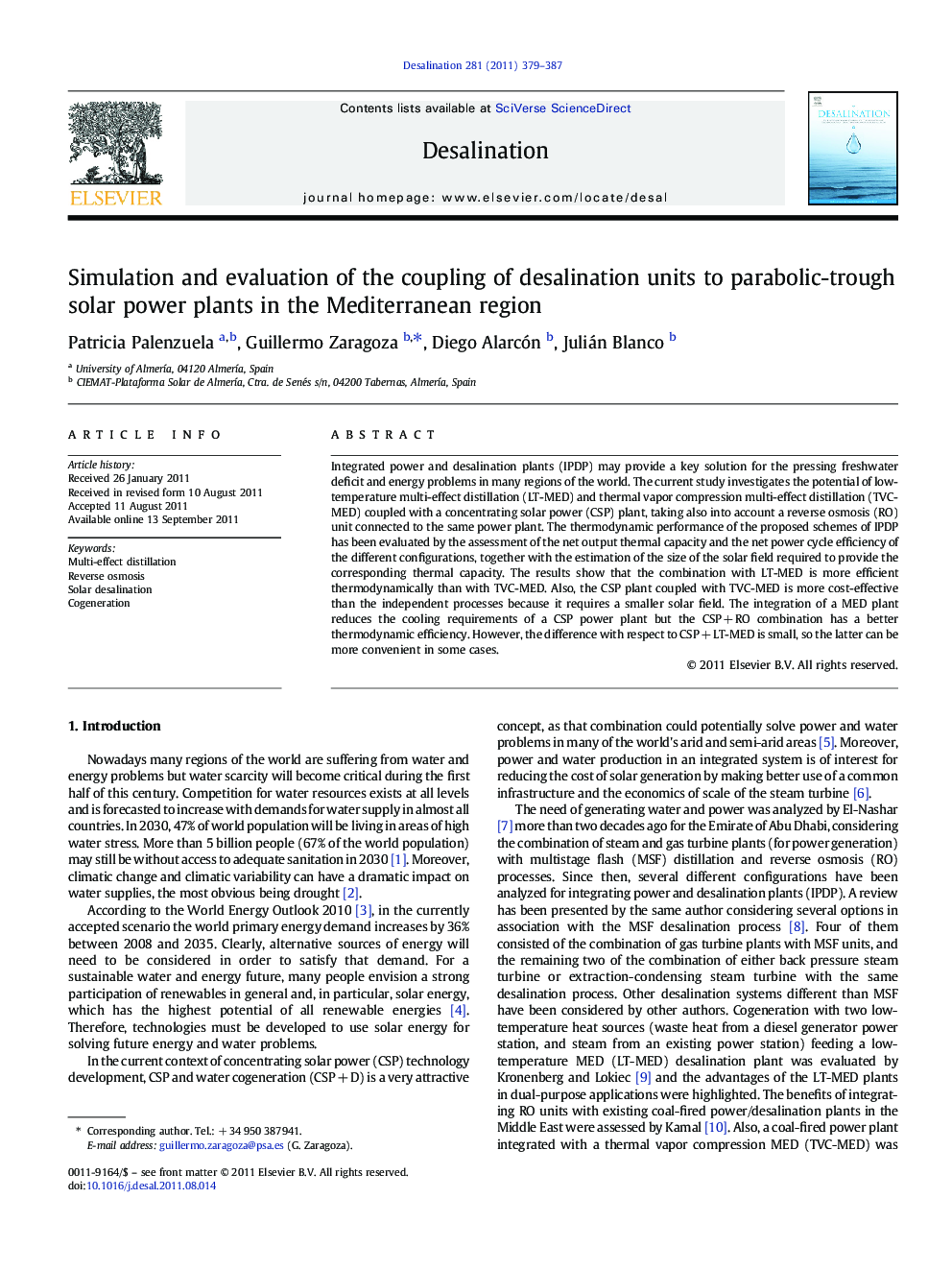| Article ID | Journal | Published Year | Pages | File Type |
|---|---|---|---|---|
| 624807 | Desalination | 2011 | 9 Pages |
Integrated power and desalination plants (IPDP) may provide a key solution for the pressing freshwater deficit and energy problems in many regions of the world. The current study investigates the potential of low-temperature multi-effect distillation (LT-MED) and thermal vapor compression multi-effect distillation (TVC-MED) coupled with a concentrating solar power (CSP) plant, taking also into account a reverse osmosis (RO) unit connected to the same power plant. The thermodynamic performance of the proposed schemes of IPDP has been evaluated by the assessment of the net output thermal capacity and the net power cycle efficiency of the different configurations, together with the estimation of the size of the solar field required to provide the corresponding thermal capacity. The results show that the combination with LT-MED is more efficient thermodynamically than with TVC-MED. Also, the CSP plant coupled with TVC-MED is more cost-effective than the independent processes because it requires a smaller solar field. The integration of a MED plant reduces the cooling requirements of a CSP power plant but the CSP + RO combination has a better thermodynamic efficiency. However, the difference with respect to CSP + LT-MED is small, so the latter can be more convenient in some cases.
► Combination of CSP with LT-MED more efficient thermodynamically than with TVC-MED. ► CSP coupled with TVC-MED requires smaller solar field than independent processes. ► CSP+RO more thermodynamically efficiency than CSP+MED. ► CSP+LT-MED reduce cooling requirements of CSP and can convenient in some cases.
